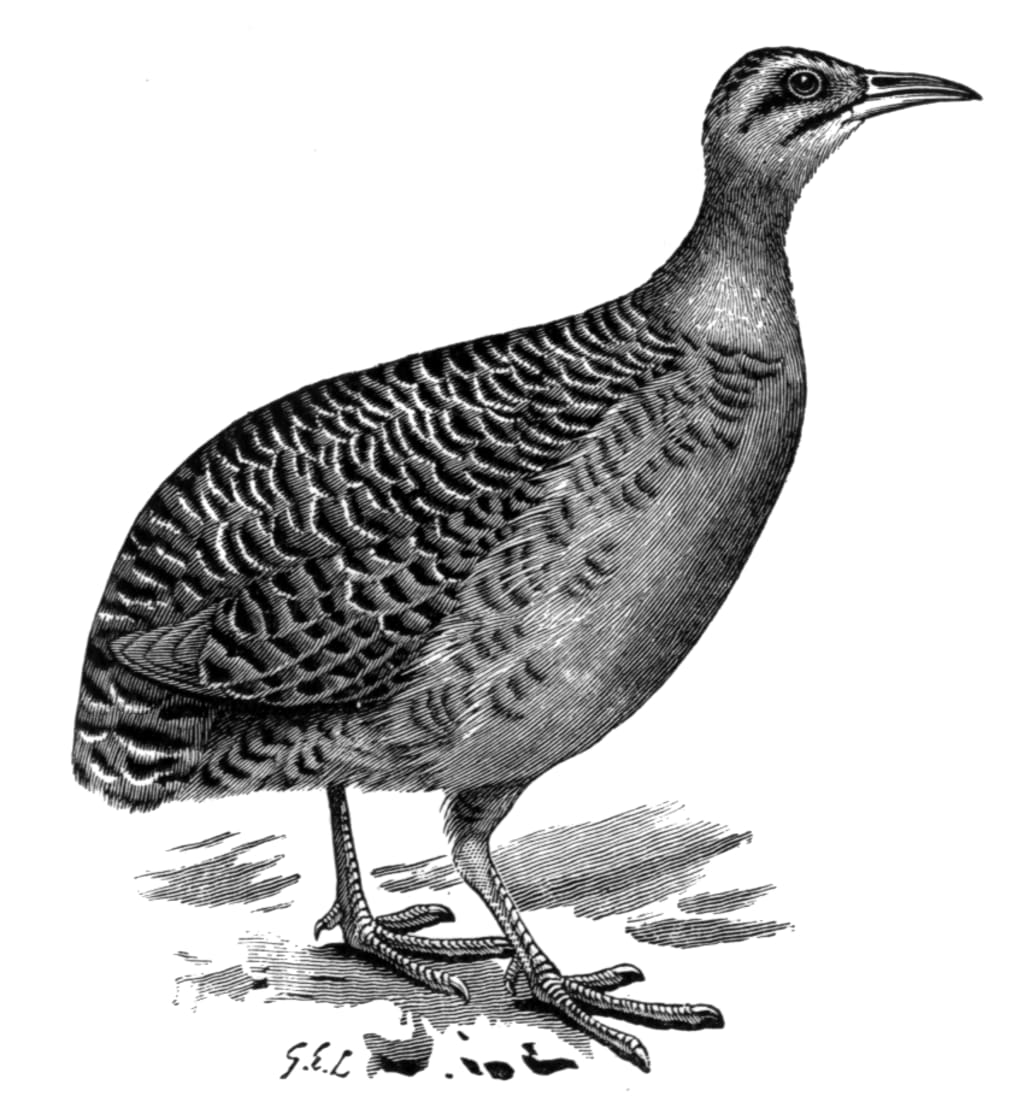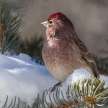
Endemic to the Andes of northern Ecuador in central Peru, where it grows between 2800 and 3900 m, the Curve-billed Tinamou is found both in tropical and semi-arid puna and páramo, characterised by evergreen foliage, such as bunch grasses, and is often widely used in slash-and-burn cultivation. Well-named for the unusually curved tail, the upper portions are dark brown spotted with black and streaked white buffalo, while the body is silver, stretching from breast to tawny rufous, and just marginally light on the rest of the subparts. The sexes are essentially identical in plumage. The species overlaps with the Andean Tinamou in some areas, but is slightly smaller, greyer above, less defined below, and loses any reddish in the skin. Two subspecies are recognised, the form of Ecuador is slightly larger and heavier, and the shape of Peru becomes lighter and smaller. The Curve-billed Tinamou is widely popular but is not especially well known in terms of its life history as is the majority of tinamous people. This reflects the very unusual usage of this tinamou, except though flushed by mistake. This breeds between January and August, and the eggs are white chocolate, but on this high-altitude tinamou there are a few other information available. The Tinamou Curve-billed is overall brownish with a black back and rufous underparts. The bands at the sides of the head are reddish brown. The underside of the mandible is brown. This also shows rufous coverts on the tail, and on the ground feathers. It forges in grasslands, with scattered bushes. The Curve-billed Tinamou typically ranges from 2800-3600 m in northern to central Peru. The curve-billed tinamou is a form of tinamou typically found in the South American Andes in grassland and shrubland habitats. Crypturellus consists of three words, either Latin, or Greek. Kruptos meaning concealed or obscured, our ears saying, and ellus saying diminutive. Therefore Crypturellus means tiny hidden tail. Both tinamou are from the tribe of Tinamidae and are also ratites in the broader scheme. Tinamous, like other ratites, can float but in general they are not fast fliers. All ratites derived from ancient flying birds, and tinamous are the closest living relative to these birds. Curve-billed tinamou is 28 cm long. The upper parts are rich chocolate, painted in white and outlined in charcoal. Her breast is rufous and white spotted, her belly is tawny-buff and her crown is black, green on her head sides and gold on her back and foreneck. In the end his legs are black in colour. The curved tinamou eats fruit from the grass, or low-lying trees, like other tinamous. They also eat small quantities of invertebrates, blossoms, delicate herbs, seeds, and roots. The male incubates the eggs which can come from as many as four different females, and then holds them up until they can be stable, normally 2–3 weeks. On the field the nest is in dense brush, in between high root buttresses. The tinamou lives in the Andes in central and southern Ecuador, north and west in Peru. At altitudes between 2.800 and 3.700 m, it prefers grassland. That can also be found at high altitudes of shrubland and pasture. The IUCN lists this species as the Least Concern, with an incidence area of 30,000 km2. There are two curve-billed tinamou sub-species. One of the two sub-species is N. c. Curvirostris, the genus called that occurs in Ecuador's central and southern Andes, and northern Peru. The most recent subspecies is N. c. Peruviana in the northern and central Andes of Peru; Piura, Cajamarca, Amazonas, San Martín, La Libertad, Ancash and Huánuco in the eastern regions.
About the Creator
MB
I am a bird aficionado and really enjoy spotting them them on hikes. I greatly appreciate the variety of birds cross North America and the world. They are amazing and intelligent creatures, each so unique and with a wonderful life.
Enjoyed the story? Support the Creator.
Subscribe for free to receive all their stories in your feed. You could also pledge your support or give them a one-off tip, letting them know you appreciate their work.






Comments
There are no comments for this story
Be the first to respond and start the conversation.